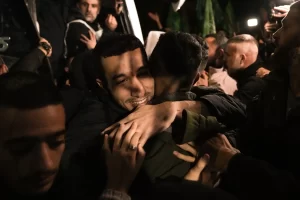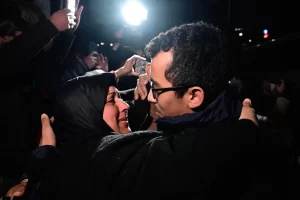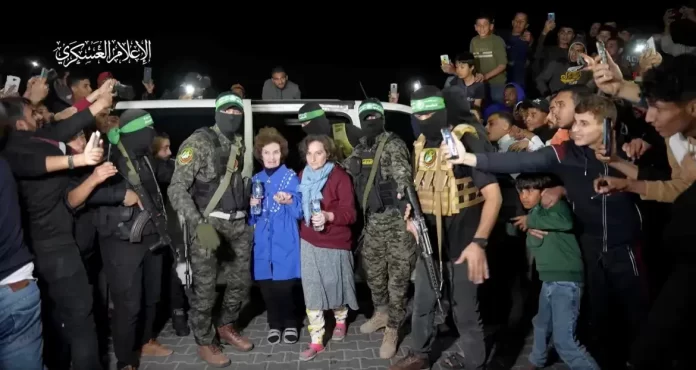With the six-day temporary truce (ceasefire) agreement between Israel and Hamas being extended for more 24 hours (Seventh day), over 74 captives from Israel and 210 Palestinians have so far been released by both parties, with around four Thai nationals and two Russian-Israelis since Friday, November 24, 2023.
This follows the Israel-Palestinian conflicts where Israeli attacks have left over 15,000 Palestinians, including at least 6,150 children and 4,000 women dead in Gaza with over 4,000 Israelis killed after Hamas launched an attack on Israel on October 7, 2023. But to understand the root of the conflict, one needs to make a flashback on the history which occurred thousand years ago, and how the two parties have been holding ceasefire agreements.

The First Intifada and Oslo Accords
The increasing number of Israelites settling in the Palestinian area gave rise to the Palestine Liberation Organization (PLO) which was first founded in Cairo- Egypt in 1964 to create a liberated Palestine in Israel. In 1970, the PLO then launched attacks on Israel from Jordan, but in 1971, it was forced to move from Jordan to Lebanon and started to carryout acts of terrorism against Israel. Fightings including that of Israel invading Lebanon to end PLO went on for years, resulting into the PLO agreeing to divide the land between Palestine and Israel. Nevertheless, many Jewish settlers still moved to the Palestinian territories occupied by Israelites.
In 1987, a united Palestinian uprising was kindled beginning with Jablia refugee camp following the Israeli Defence Forces truck colliding with two Palestinian civilian vans, killing four of them.
The first intifada which resulted into several killings later resulted into signing of the peace treaty known as the first Oslo Accord by Israel and the PLO in Washington DC and the second one in Tabor-Egypt. According to the Accords, West Bank was divided into three areas, where Area A was specifically controlled by Palestine, Area B was controlled by both Palestine and Israel, while Area C was specifically controlled by Israel.
Second Intifada
In 2000, during the second intifada, much as peace talks continued, the Israelites and Palestinians couldn’t reach an agreement on issues regarding the standards of Jerusalem, rights the rights of refugees, and the increasing Jewish settlement on Palestinian lands. Ariel Sharon who later became Israel’s Prime Minister made a visit to the temple mount and Al-Aqsa Mosque all in Jerusalem, an act that was considered as offensive by several Palestinians which led to the break out of the second intifada.
In 2005, the aggression ended with Israel vacating Gaza and proceeded to occupy areas of West Bank.

Israel Conflict with Hamas
Hamas, an Arab state military group is believed to be attacking Israel in order to destroy and remove Israel from the world map and create an Islamic state.
In 2007, after a war, Hamas ran away from the Palestinian authority and settled in Gaza. Meanwhile, Israel put Gaza under a re-suffocating barrier which resulted into various bloody wars between the two groups including Operation Cast Lead from 2008-2009, Operation Pillar of Defense in 2012, and Operation Protective Edge in 2014. In the same year, Hamas and Fatah agreed to form a national unity government.
In 2018, US Embassy was relocated from Tel Aviv to Jerusalem which was considered as a signal of American support for Jerusalem as Israel’s capital by Palestinians.
In 2021, the conflict between Israel and Palestine was resurrected by a series of hostility in Jerusalem resulting into huge violence until the cease fire by Egypt, Equatorial Guinea and United Nations came into effect on May 21st.
For long in the history of Israel, tensions between Jews and Arab Muslims have existed. The complex hostility between the two groups dates all the way back to ancient times when they both populated the area and deemed it holy. Both Jews and Muslims consider Jerusalem as a city, sacred because it contains the Temple Mount, which includes the holy sites Al-Aqsa Mosque, the Western Wall, and the Dome of the Rock, among others.
In the recent years, much of the conflict is centered on who is occupying the Gaza Strip which is a piece of land located between Egypt and modern-day Israel, Golan Height which is a rocky plateau between Syria and modern-day Israel, and West Bank-a territory that divides part of the modern-day Israel and Jordan.
As the conflict between the two states rotates around land, both of them claim that Jerusalem is their city. Additionally, both states blame each other for the attacks on civilians that left them dead.
On October 7, 2023, an attack that left over 4,000 people dead and over 2000 nursing serious injuries was launched on Israel by Hamas in Gaza. In retaliation, the Israeli Prime Minister, Benjamin Netanyahu formally declared war on Hamas.
Recently, a number of countries have come up to advocate for a two-state solution.















